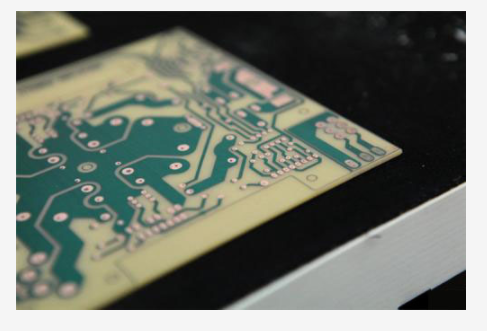Take you to understand how the PCB production process is etched
In PCB proofing, a layer of lead-tin resist is pre-plated on the part of the copper foil that needs to be retained on the board sublayer, that is, the pattern part of the circuit, and then the remaining copper foil is chemically etched away, which is called etching.
So, what are the types of etching, and what are the commonly used etchants?
1. Types of etching
There are two layers of copper on the board during etching. Only one layer of copper in the outer layer must be completely etched away, and the rest will form the final required circuit, which is called "pattern plating".
Another method is to plate copper on the entire board, and the parts other than the photosensitive film are only tin or lead-tin resist, which is called the "full board copper plating process". Compared with pattern electroplating, its biggest disadvantage is that all parts of the board must be plated twice with copper, and they must all be etched away during etching. Therefore, when the wire width is very fine, a series of problems will occur.
In PCB proofing, another method is to use photosensitive film instead of metal plating as a resist layer. This method is similar to the inner layer etching process.

2. What are the etching agents
At present, tin or lead-tin is the most commonly used resist layer, used in the etching process of ammonia-based etchant. Ammonia etchant is a commonly used chemical liquid, which does not cause any chemical reaction with tin or lead-tin.
In addition, ammonia/ammonium sulfate etching solution is also available on the market. After use, the copper in it can be separated by electrolysis. Because of its low corrosion rate, it is generally used in chlorine-free etching.
Some people use sulfuric acid-hydrogen peroxide as an etchant to corrode the outer layer pattern. Due to many reasons including economy and waste liquid treatment, this process has not been widely used in a commercial sense.
In PCB proofing, once there is a problem in the etching process, it is bound to be a batch problem, which will eventually cause great quality risks to the product. Therefore, it is particularly important to find a suitable PCB proofing manufacturer. ipcb is a high-precision,high-quality PCB manufacturer, such as: isola 370hr PCB,high-frequency PCB, high-speed PCB, ic substrate, ic test board, impedance PCB, HDI PCB, Rigid-Flex PCB, buried blind PCB, advanced PCB, microwave PCB, telfon PCB and other ipcb are good at PCB manufacturing.